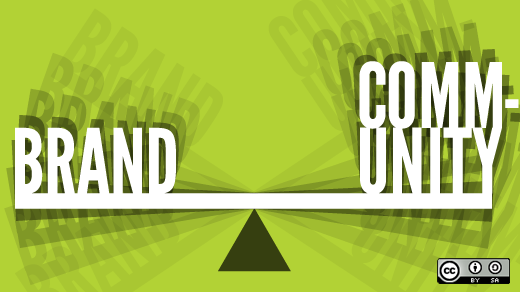My friend and former colleague Chris Grams recently wrote a great article on the topic of extending the TED brand by allowing anyone to organize their own TED conference under “TEDx” branding. Chris posits that trademark law may be standing in the way of successful branding in today's business environment, where brands and brand affinity are built through community engagement rather than through top-down, owner-driven brand strategy.
I couldn't agree more.
As far as I'm concerned, it is the result of an unintentional and unnecessary disconnect between the realities of the marketplace and trademark legal doctrine.
First, some vocabulary. I sometimes find that the marketing folks talk about “brand” and the legal folks talk about “trademarks” as if they're talking about different universes. To me, a “brand” is the consumer's experience and association taken as a whole, and the “trademark” is the legally recognized visual and/or aural identifier that is the tangible representation of the brand. Trademark law has always been, at least in part, about protecting the brand owner, so there is no good reason that trademark law should be inconsistent with the interests of the brand owner.
But the law moves slowly. Trademark law as it currently exists developed at a time when the trademark owner was the manufacturer and completely controlled its brand identity. This dated law creates legal risk for what might otherwise be perfectly sensible branding practices in today's complex commercial and social environment.
One area of risk is the possible loss of rights through trademark abandonment. Traditional trademark doctrine says that if the trademark owner doesn't “control” the quality of the goods and services with which a mark is used, then the trademark may be “abandoned” – that is, the trademark owner loses all rights to enforce its trademark against others, irregardless of how strong the trademark actually is. Another is “genericism,” when the trademark becomes the name everyone uses to describe the thing and it loses its significance as a brand identifier altogether – Chris's aspirin, escalator and zipper examples. (And for those of you who don't think it happens? Ask Intel what happened to its “386” trademark. Yeah.)
Unfortunately, these existing trademark doctrines pretty directly collide with Chris's philosophy that brand significance can and should be built through looser control by the trademark owner and greater community engagement. The lawyer's nightmare is that ceding too much control for brand identity over to the community might mean the entire forfeiture of the brand. In reality that's probably a low-probability event, but lawyers have to plan for the worst-case scenario. So we have to put the brakes on, not because we want to, but because our job is to keep the brand safe in the legal environment that currently exists. So forgive us our nay-saying: we're trying to protect the brand too.
But the law developed for a reason. The role of the trademark is to act as an identifier for known source or quality. My question back to Chris is - what if the community doesn't act in the best interest of the brand? What if the trademark is used in so many different ways that the consumer doesn't know what it's getting anymore? This is a topic of frequent discussion in open source circles, where some constituents have a hard time understanding why trademark owners like Mozilla and Fedora put restraints on when and how someone may use the trademark. What if, for example, a downstream distribution is changed so much that it breaks the functionality, but the distro is still branded as Authentic Open Source Project? In that case, hasn't the branding function failed? Isn't that a risk in the community process?






2 Comments